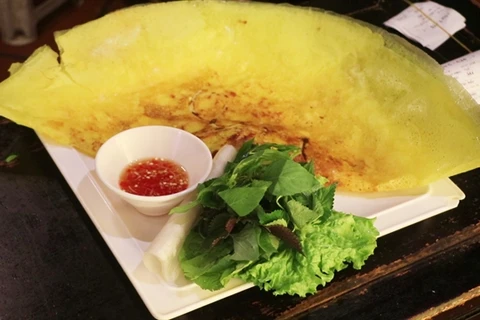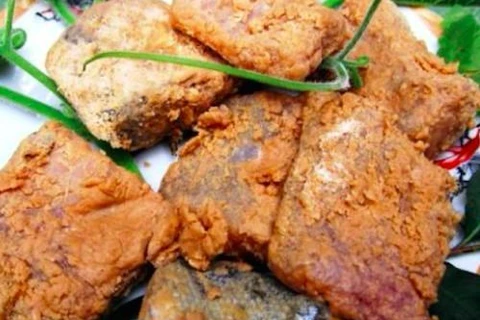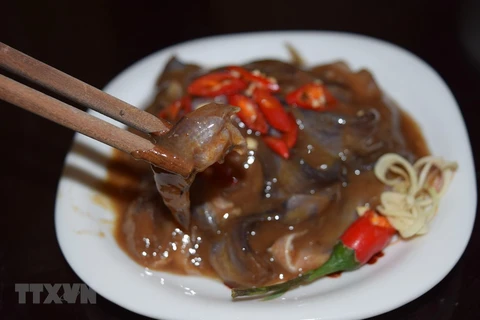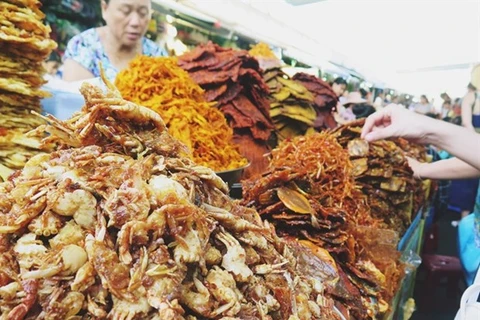Hanoi (VNA) - Banh gio (rice dough dumpling with minced pork and wood ear mushrooms inside) is favoured as a breakfast dish and as an after-school supper dish for children.
Among the myriad Vietnamese dishes made with rice, be it main courses, side-dishes or snacks that are meals in themselves, the softest gluey texture belongs to banh gio.
A banh gio served hot stands alongside a bowl of steaming hot, aromatic pho as dishes of choice on a misty, chilly morning in the capital city.
At just 15,000 to 30,000 VND (70 USD cents to 1.4 USD) each, a banh gio offers great value for money.
The pyramid-shaped rice dough dumpling is wrapped in layers of banana leaves. Once the leaves have been removed to reveal the translucent dumpling, expert eaters just bite into it cupping the leaves in their hands, but spreading the leaves out and using a teaspoon is a far “safer” option in terms of avoiding a mess.
Once the teaspoon cuts into the cake, the filling of minced pork, wood ear mushrooms and shallots is uncovered and it can be eaten with the covering-filling proportion best left to individual preferences.
Inside the mouth, it seems to melt on the tongue, with the soft exterior and well-cooked filling making the whole cake tender and aromatic.
Eating the good rice dough, one feels like it melts in their tip of the tongue. The filling which features both fat and lean minced pork and wood ear, is often over cooked, therefore, it is very tender, soft and aromatic.
Banh gio is sometimes served with cha, gio (Vietnamese sausage), grilled pork, chilli sauce and cucumber. In some places, banh gio is dipped in soya sauce before it is eaten.
While the cake is a popular dish in Hanoi, it is particularly favoured by students, for whom it is a tasty, affordable snack. As a result, many food stalls near schools sell this delicacy. It is also sold in most markets, and on many streets in Hanoi. As it is served as breakfast or supper, some eateries offering this dish only open in the morning or late afternoon./.

























